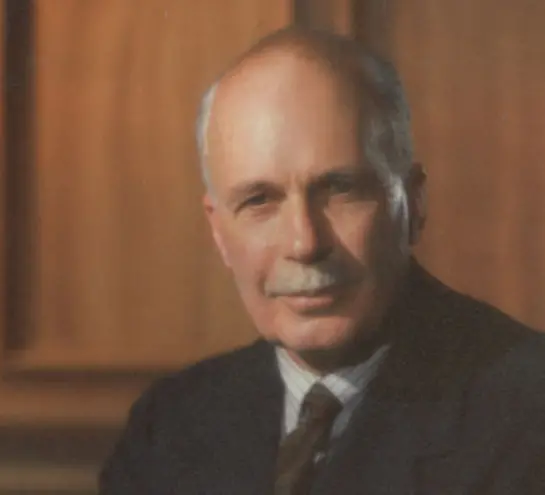Biography
Ri positions
- Professor of Natural Philosophy, 1938-1953
- Fullerian Professor of Chemistry, 1954-1966
- Superintendent of the House, 1954-1966
- Director of the Davy-Faraday Research Laboratory, 1954-1966
- Director, 1965-1966
- Emeritus Professor, 1966-1971
The son of William Henry Bragg, William Lawrence was born in Adelaide where he attended St Peter's College. He later studied science at the University of Adelaide. When his family moved to England in 1909, he studied mathematics and physics at Trinity College, Cambridge.
After moving to Leeds he and his father worked out how to determine the molecular structure of crystals using X-rays, for which they jointly received the Nobel Prize in 1915. At the age of twenty-five he remains the youngest ever Nobel Prize winner. He served as an officer in the Army in France throughout the Great War where he worked on using sound to determine the location of enemy guns.
In 1919 he succeeded Ernest Rutherford as Professor of Physics at the University of Manchester where he continued his work on crystallography. Between 1937 and 1938 he was briefly Director of the National Physical Laboratory before again succeeding Rutherford as Professor of Physics at the University of Cambridge and Director of the Cavendish Laboratory.
During the 1939-1945 war he served on a number of government scientific committees. At the Cavendish he established the Unit for the Study of Molecular Structure of Biological Systems funded by the Medical Research Council where Max Perutz, John Kendrew, Francis Crick and James Watson carried out much of their groundbreaking work on the structures of proteins and of DNA.
At the Royal Institution he founded the Schools Lectures which continue to this day. He continued the Royal Institution's research on X-ray crystallography bringing Perutz and Kendrew with him who held joint appointments between the Royal Institution and the Cavendish. Here they worked out the structures of myoglobin and haemoglobin. In the first half of the 1960s, using the first computer in the Royal Institution, his group, which included David Phillips and Louise Johnson, determined the structure of an enzyme, lysozyme, for the first time.
